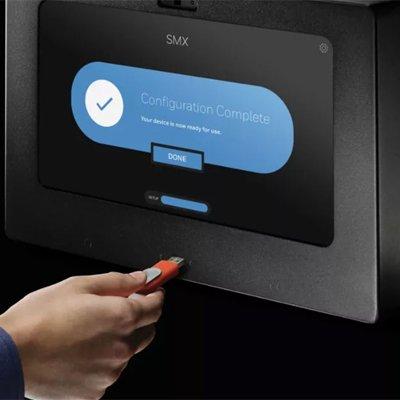How should the security industry promote diversity?
Editor Introduction
Diversity in a company’s workforce is arguably more important now than ever. Societal awareness of the importance of diversity has grown, and many people see diversity as an important factor that reflects positively (or negatively) on a company’s culture and image in the marketplace. We asked this week’s Expert Panel Roundtable: What should the security industry do to promote workplace diversity?
To promote greater workplace diversity in security, the first step to take is to confront unconscious biases. We all have them and decision-makers within the security industry are no different. Failing to confront them can lead to a lack of diversity, making the problem worse. People need to feel seen; it’s empowering and offers a way for others to learn more about a specific culture or group of people. Additionally, organisations must make it known that they find value in all perspectives. Embracing differences and everyone’s perspective not only helps everyone feel acknowledged and understood, but it also broadens how we think about things and approach problems – and that is always a benefit to the workplace culture, work environment, and the bottom line.
Improving diversity in the security market is vital for everyone. Although we have come a long way, we still have work to do, but I'm pleased to see so many initiatives around building diversity have gained significant support over the past few years. Not only does diversifying the industry help it better reflect modern society, but it can also bring new viewpoints to the table. A variety of voices and perspectives helps security teams understand how risks come to fruition and how we can help our customers leverage technology and processes to address them holistically. I believe that we cannot fully protect our most critical assets if we keep a one-track mind. We must have diversity to achieve our most important goal. I’m proud to say that diversity is important to Edge360 when building our team. Our teams are comprised of talented individuals from different backgrounds, educational histories, and experiences.
Start the conversation, take the initial action. That power is within all of us. You don't need a fully formed diversity and inclusion strategy to start talking about the topic. Once the conversation is started, the ideas for creating more inclusive workplaces will follow. Diversity is a value add to a business; having various viewpoints means a wider range of perspectives, knowledge, and experience. This is what leads to innovation and in today’s ever-evolving business landscape, it can be the difference between capturing market share and falling behind the competition. Companies that embrace diversity and inclusion cultivate innovative talent and create organisations positioned for 21st-century success.
It is widely considered that Diversity refers to the characteristics that make people unique, Inclusion refers to behavioural and cultural norms that make people welcome and Belonging refers to an individual sense of acceptance. At HID, we believe that it is this ecosystem trio that underpins our way of doing business. Our products and solutions create a safe and secure world that wouldn’t be possible without a global organisation and rich talent pool in which the world is literally represented around our table, co-creating, and collaborating on securing the World’s People, Places and Things. At HID, we believe promoting diversity starts with having the conversations that matter, creating a culture where unconscious biases can be gently confronted, and educating all in the role we play, how we show up, and the decisions we take. Furthermore, we are in the process of hiring a thought leader in Diversity, Inclusion, and Belonging.
Diversity and equity go hand in hand, helping the people and the business evolve. For a diversity program to work, and be something worth promoting, we need the data to prove our commitment; words are not enough. A diversity program is complicated, not only must teams consist of a variety of identities, be treated equally, and have access to the right education, the programme must continually be evaluated to ensure it delivers. A challenge for security will be in accessing the data that proves everyone is treated equally. Where day-to-day responsibilities are generally managed with to-do lists, it becomes almost impossible to confirm exactly who did what/when and that workload was distributed equally. Therefore, the security industry needs to invest in the technology necessary to provide reliable data which proves equity day in, day out, if they are going to promote workplace diversity as part of their brand.
First, publicise and promote diverse performers. There are many publications and communication vehicles to acknowledge great employee contributions and achievements. As organisations are utilising these, it is important to be intentional to show successes from workers of all genders and ethnicities. Second, recruit and create awareness across multiple channels. Companies need to be intentional about ensuring jobs are visible to a diverse group of individuals across diverse publications and media. This includes creating relationships with organisations with diverse memberships. Third, target female audiences. The security industry has traditionally been a male-dominated. Female talent, insights, and perspectives will make the industry stronger and more innovative. Companies within the Security industry need to ensure that women have attainability for all roles. Finally, consider remote workers versus specific geography. Previously, companies traditionally limited the hiring pool to candidates located within 30-60 miles of the company’s headquarters. By allowing space for remote workers, companies can obtain a more diverse talent pool across expanded geographies.
Editor Summary
Diversity starts with a conversation, even if it is an awkward one about unconscious bias. But confronting the issue is the first step to addressing it, our Expert Panelists agree, and greater diversity provides an important tool to unlock even greater value for a company and for an industry such as security.
- Related companies
- HID
- STANLEY Security
- Edge360
- Identiv
- Zendelity
- ONVU Technologies
- Related links
- HID Access control software
- Biometric Access control software
- Broadcast Messenger Access control software
- Contact Access control software
- Mifare Access control software
- Proximity Access control software
- Central Monitoring Option Access control software
- Door Monitoring Option Access control software
- ID Badging Software License Access control software
- License Access control software
- Management Systems Upgrade Access control software
- NStar software upgrade Access control software
- Serial Interface Option Access control software
- Visitor Management tool Access control software
- Related categories
- Access control software
- View all news from
- HID
- STANLEY Security
- Edge360
- Identiv
- Zendelity
- ONVU Technologies
Expert commentary
Maximising security and performance
DownloadGuide for HAAS: New choice of SMB security system
DownloadSecurity practices for hotels
DownloadAccess control system planning phase 2
DownloadThe key to unlocking K12 school safety grants
DownloadMilesight 4x5MP AI Multi-Directional Camera
Anviz AI-driven Fisheye Dome Network Camera
Honeywell SMX: Cybersecurity for Operational Environments





















